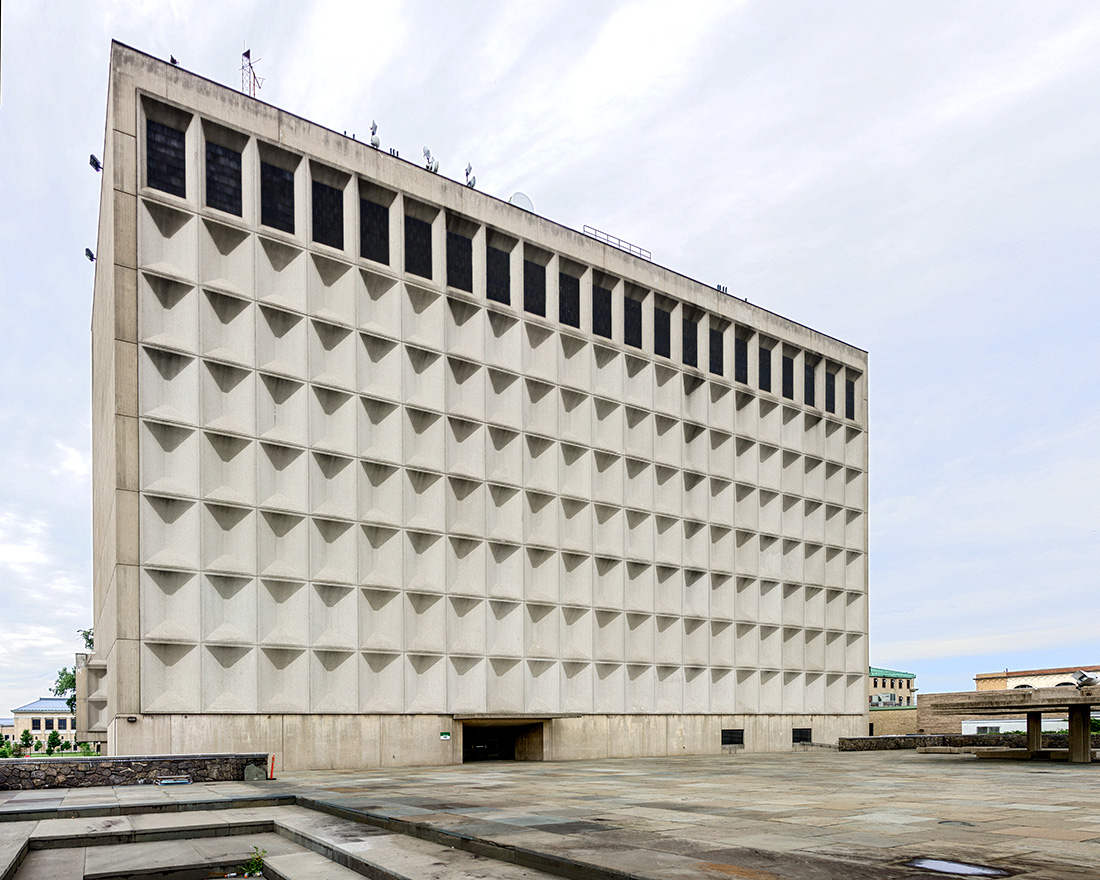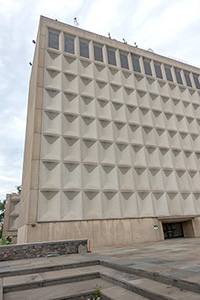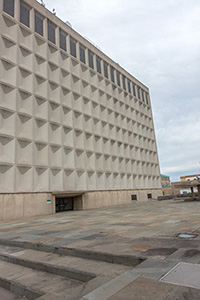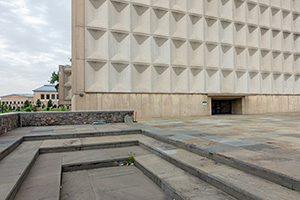
Tech II (Meister Hall), The Bronx, designed by Marcel Breuer — © Brian Rose
A little commentary on making a photograph. A few days ago, I wrote about visiting the Bronx Community College campus — originally New York University. In the ’60s the campus was transformed by Bauhaus trained architect Marcel Breuer.
This amazing view of Meister Hall was made with my pocket camera, a Sony RX100, which shoots RAW and produces 20 megapixel image files. It’s been my visual note taker, preview camera when shooting 4×5 negative, and all round backup. Pictures from this camera have even been used in my books, and most of the images in this blog were made with it.
So how does a tiny camera make a photograph with this kind of clarity and monumentality? First of all, it helps that the Sony is a brilliant camera, but you can’t just point up at a building like this and expect to make a fully realized architectural photograph. Here’s how it was done.
 |  |  |
Since it was not possible to get the whole rectangle of the building into the frame of the camera even using the widest focal length, I made multiple images — two verticals left and right, and one horizontal that included some of the plaza. I opened each image in Photoshop in camera raw, adjusted the exposure and color — made them low contrast — and saved them. I then roughly corrected the perspective of each of the images so that the lines were not converging. I then used photomerge, a feature in Photoshop that stitches together overlapping frames to form a single image. From there I fine tuned the perspective of the overall image, and cropped out empty areas left when the three frames were merged. Finally, I worked on the color and contrast of the image. It all took two or three hours. The stitched together image file is about 250MB.
Most of the time it isn’t necessary to do something this elaborate. None of the other pictures I took walking around the campus needed that kind of treatment. But sometimes there’s no other way.